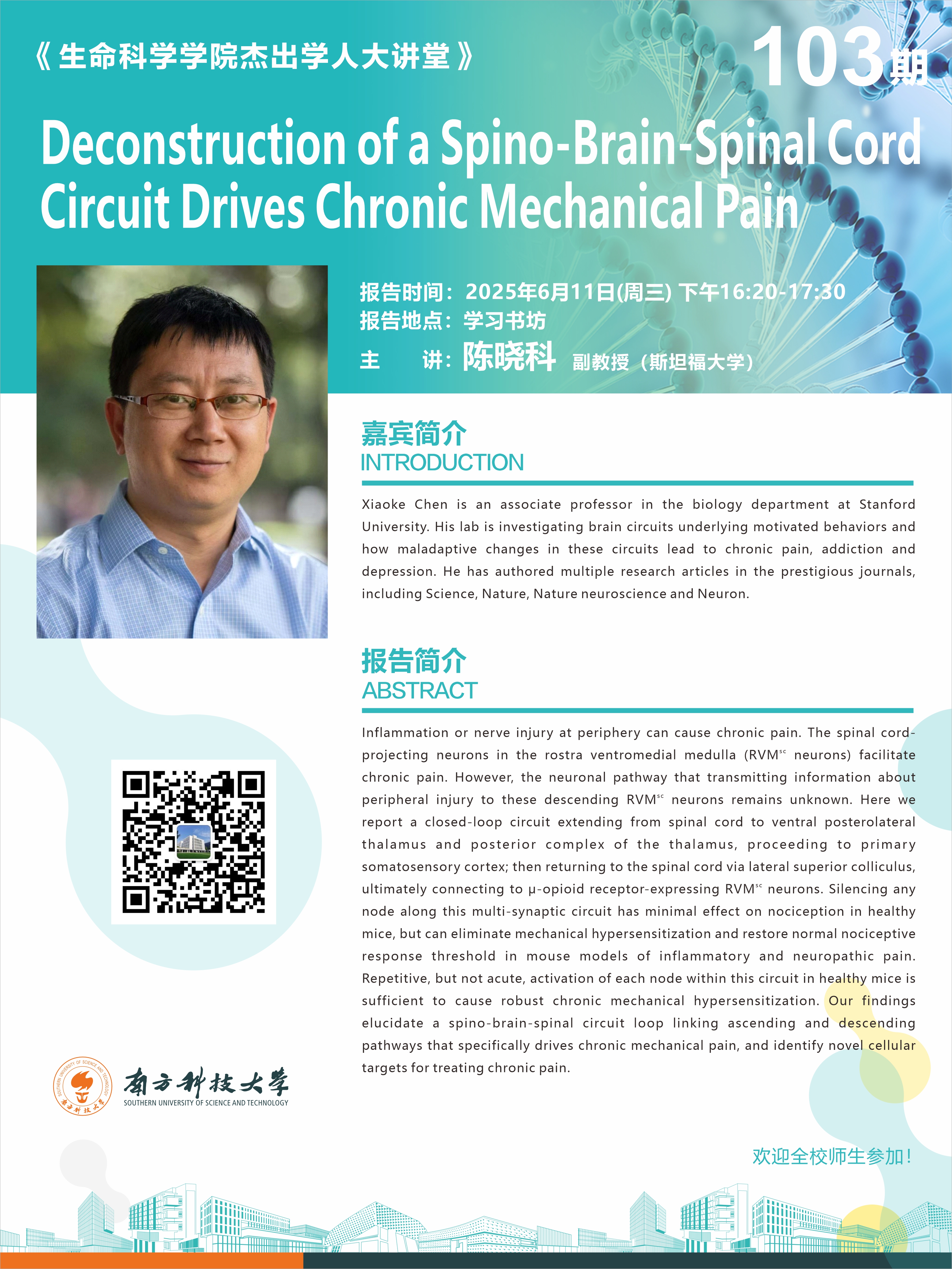
主讲人: 陈晓科 副教授
时间: 6月11日(周三) 下午16:20-17:30
地点: 学习书坊
时 间:2025年6月11日(周三) 下午16:20-17:30
地 点:学习书坊
主 讲:陈晓科 副教授(斯坦福大学)
题 目:Deconstruction of a Spino-Brain-Spinal Cord Circuit Drives Chronic Mechanical Pain
摘要:
Inflammation or nerve injury at periphery can cause chronic pain. The spinal cord-projecting neurons in the rostra ventromedial medulla (RVMsc neurons) facilitate chronic pain. However, the neuronal pathway that transmitting information about peripheral injury to these descending RVMsc neurons remains unknown. Here we report a closed-loop circuit extending from spinal cord to ventral posterolateral thalamus and posterior complex of the thalamus, proceeding to primary somatosensory cortex; then returning to the spinal cord via lateral superior colliculus, ultimately connecting to μ-opioid receptor-expressing RVMsc neurons. Silencing any node along this multi-synaptic circuit has minimal effect on nociception in healthy mice, but can eliminate mechanical hypersensitization and restore normal nociceptive response threshold in mouse models of inflammatory and neuropathic pain. Repetitive, but not acute, activation of each node within this circuit in healthy mice is sufficient to cause robust chronic mechanical hypersensitization. Our findings elucidate a spino-brain-spinal circuit loop linking ascending and descending pathways that specifically drives chronic mechanical pain, and identify novel cellular targets for treating chronic pain.
个人简介:
Xiaoke Chen is an associate professor in the biology department at Stanford University. His lab is investigating brain circuits underlying motivated behaviors and how maladaptive changes in these circuits lead to chronic pain, addiction and depression. He has authored multiple research articles in the prestigious journals, including Science, Nature, Nature neuroscience and Neuron.